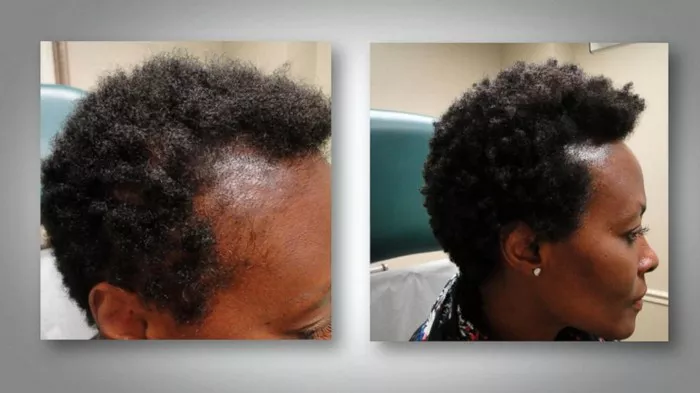Undergoing a hair transplant is a significant step towards restoring your hair and confidence. While patience is key during the recovery process, there are several measures you can take to support faster healing and achieve optimal results. In this article, we’ll explore effective strategies to help you heal quicker after a hair transplant.
The process of hair transplant surgery
Hair transplant surgery involves the relocation of hair follicles from a donor area, usually the back or sides of the scalp, to areas with hair thinning or baldness. Two primary techniques are Follicular Unit Transplantation (FUT), where a strip of skin is removed for grafts, and Follicular Unit Extraction (FUE), which involves individually extracting follicles. After preparation, tiny incisions are made in the recipient area, and grafts are carefully implanted. The transplanted hair then gradually grows, usually shedding initially before new growth starts within a few months. It’s essential to consult a specialist for an individualized plan based on your hair loss pattern and goals.
Will I feel numb after hair transplant surgery?
It’s common to experience numbness after a hair transplant surgery. Numbness can occur in both the donor and recipient areas due to the disruption of nerve endings during the procedure. This numbness is usually temporary and gradually improves as nerves regenerate. Sensation typically returns over the course of several weeks to months as your body heals. While numbness can be expected, if you have concerns about the duration or extent of numbness, it’s advisable to discuss them with your surgeon during follow-up appointments to ensure a smooth and expected recovery process.
How to heal faster after hair transplant?
To promote faster healing after a hair transplant, consider these steps:
1. Follow Post-Operative Care:
Adhere to your surgeon’s instructions for cleaning, shampooing, and caring for the transplanted area to prevent infection and facilitate healing.
2. Hydrate and Nourish:
Drink plenty of water and maintain a balanced diet rich in vitamins and proteins to support tissue repair and overall healing.
3. Protect from Sun:
Shield the treated area from direct sunlight using a hat or sunscreen to prevent sunburn and hyperpigmentation.
4. Avoid Touching:
Refrain from touching, scratching, or rubbing the transplanted area to prevent graft dislodgment.
5. Minimize Strenuous Activities:
Rest and avoid heavy lifting and vigorous exercise for a few weeks to prevent strain on the healing area.
How soon can I drink water after hair transplant?
After a hair transplant, you can usually drink water shortly after the procedure. Hydration is important for your overall well-being and recovery. Surgeons typically recommend drinking water once you’re fully awake and alert post-surgery, which is usually within a few hours. However, it’s important to avoid excessive consumption that might lead to frequent bathroom trips, potentially disturbing the healing process. Follow your surgeon’s instructions regarding water intake and other post-operative care guidelines to ensure a smooth recovery after the hair transplant procedure.
See Also: Does hard water cause hair loss: A Simple Guide
6. Elevate Head While Sleeping:
Sleep with your head elevated on pillows to reduce swelling and promote blood circulation.
Other Considerations
There are some things to pay attention to after hair transplant surgery:
1. Manage Stress:
Engage in relaxation techniques like deep breathing and meditation to minimize stress, which can impact healing.
2. Avoid Blood Thinners:
Skip blood-thinning medications as they can increase bleeding and slow down healing.
3.Gentle Massage:
Lightly massage the scalp to enhance blood circulation, aiding nutrient delivery to healing grafts.
Remember, healing varies from person to person. Prioritize post-operative care, stay patient, and consult your surgeon for personalized guidance during the recovery process.
Conclusion
Healing after a hair transplant requires time and care, but by implementing these strategies, you can potentially speed up the recovery process. Remember, each individual’s healing journey is unique, so be patient and follow your surgeon’s guidance. Prioritize post-operative care, maintain a healthy lifestyle, and give your body the rest it needs to achieve the best possible results from your hair transplant.


